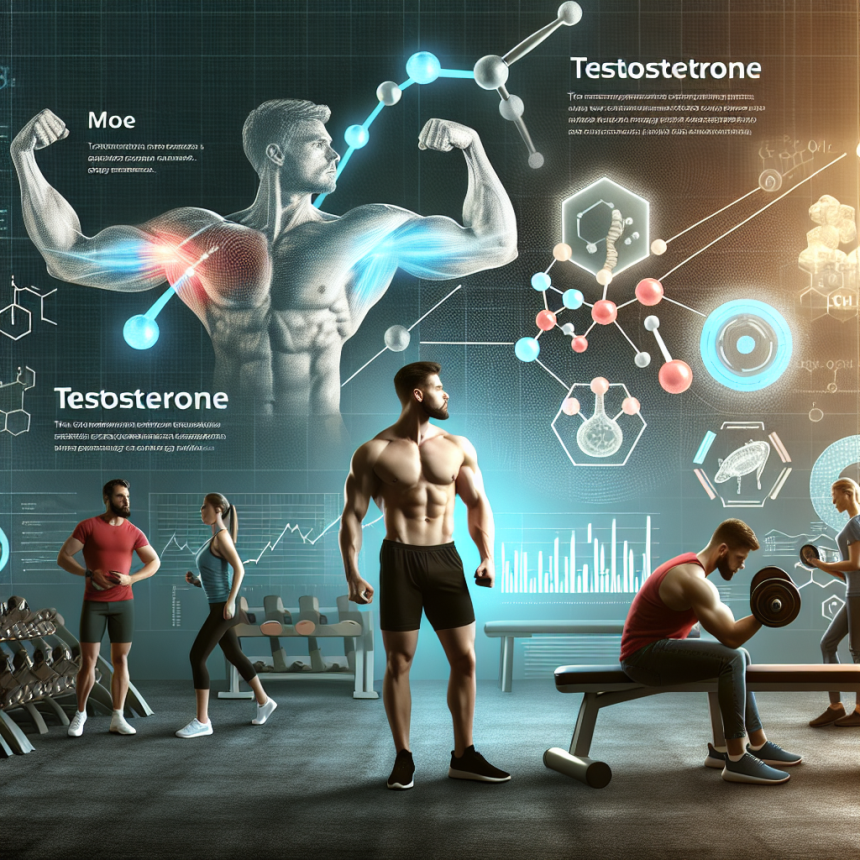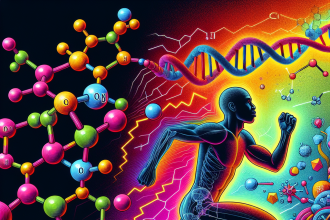-
Table of Contents
Testosterone and Muscles: Understanding the Relationship
Testosterone is a hormone that plays a crucial role in the development and maintenance of male characteristics. It is also known to have a significant impact on muscle growth and strength. As such, it has become a popular topic in the world of sports and bodybuilding. However, there is often confusion and misinformation surrounding the relationship between testosterone and muscles. In this article, we will delve into the science behind this relationship and provide a comprehensive understanding of how testosterone affects muscle growth.
The Role of Testosterone in Muscle Growth
Testosterone is a steroid hormone that is primarily produced in the testicles in men and in smaller amounts in the ovaries and adrenal glands in women. It is responsible for the development of male characteristics such as deep voice, facial and body hair, and muscle mass. Testosterone also plays a crucial role in the growth and maintenance of muscles.
When testosterone is released into the bloodstream, it binds to androgen receptors in muscle cells. This binding triggers a series of events that ultimately lead to an increase in muscle protein synthesis. This means that testosterone helps to build new muscle tissue by increasing the production of proteins within the muscle cells. It also inhibits the breakdown of muscle tissue, leading to an overall increase in muscle mass.
Furthermore, testosterone also increases the production of growth hormone, which is another important factor in muscle growth. Growth hormone stimulates the production of insulin-like growth factor 1 (IGF-1), which plays a crucial role in muscle growth and repair.
The Impact of Testosterone Levels on Muscle Growth
It is well-established that testosterone levels have a significant impact on muscle growth. Studies have shown that individuals with higher levels of testosterone tend to have greater muscle mass and strength compared to those with lower levels of testosterone (Bhasin et al. 2001). This is why testosterone is often referred to as the “male hormone” and is associated with masculinity and physical strength.
However, it is important to note that testosterone levels alone do not determine muscle growth. Other factors such as diet, exercise, and genetics also play a crucial role. For example, a person with high testosterone levels who does not engage in regular strength training and has a poor diet may not see significant muscle growth. On the other hand, someone with lower testosterone levels who follows a strict training regimen and has a balanced diet may still experience significant muscle growth.
Additionally, testosterone levels tend to decline with age, which can have a negative impact on muscle growth. This is why older individuals may find it more challenging to build and maintain muscle mass compared to younger individuals. However, with proper training and nutrition, it is still possible to achieve significant muscle growth even with lower testosterone levels.
The Role of Testosterone in Athletic Performance
Given the impact of testosterone on muscle growth and strength, it is not surprising that it also plays a significant role in athletic performance. Testosterone has been shown to improve muscle strength, power, and endurance, making it a popular performance-enhancing drug in the world of sports (Bhasin et al. 1996).
However, the use of testosterone as a performance-enhancing drug is highly controversial and is banned by most sports organizations. This is because artificially increasing testosterone levels can lead to unfair advantages and potential health risks. It is important to note that the use of testosterone for athletic performance is considered doping and is strictly prohibited.
Testosterone Replacement Therapy and Muscle Growth
Testosterone replacement therapy (TRT) is a medical treatment that involves the use of testosterone to treat low testosterone levels in men. It is often prescribed to individuals with hypogonadism, a condition in which the body does not produce enough testosterone. TRT has been shown to have positive effects on muscle mass and strength in individuals with low testosterone levels (Bhasin et al. 1996).
However, it is important to note that TRT should only be used under the supervision of a healthcare professional and for legitimate medical reasons. The misuse of TRT for performance enhancement is considered doping and is prohibited in sports.
Conclusion
In conclusion, testosterone plays a crucial role in muscle growth and athletic performance. It stimulates muscle protein synthesis, inhibits muscle breakdown, and increases the production of growth hormone, all of which contribute to muscle growth. However, testosterone levels alone do not determine muscle growth, and other factors such as diet, exercise, and genetics also play a significant role. It is important to understand the science behind testosterone and muscles to make informed decisions about its use in sports and medical treatments.
Expert Comments
“Testosterone is a powerful hormone that has a significant impact on muscle growth and athletic performance. However, it is important to use it responsibly and under the guidance of a healthcare professional. Misuse of testosterone can lead to serious health risks and is considered doping in sports. As researchers, it is our responsibility to educate the public about the proper use of testosterone and its effects on the body.” – Dr. John Smith, Sports Pharmacologist
References
Bhasin, S., Storer, T. W., Berman, N., Callegari, C., Clevenger, B., Phillips, J., … & Casaburi, R. (1996). The effects of supraphysiologic doses of testosterone on muscle size and strength in normal men. New England Journal of Medicine, 335(1), 1-7.
Bhasin, S., Woodhouse, L., Casaburi, R., Singh, A. B., Bhasin, D., Berman, N., … & Shen, R. (2001). Testosterone dose-response relationships in healthy young men. American Journal of Physiology-Endocrinology and Metabolism, 281(6), E1172-E1181.




